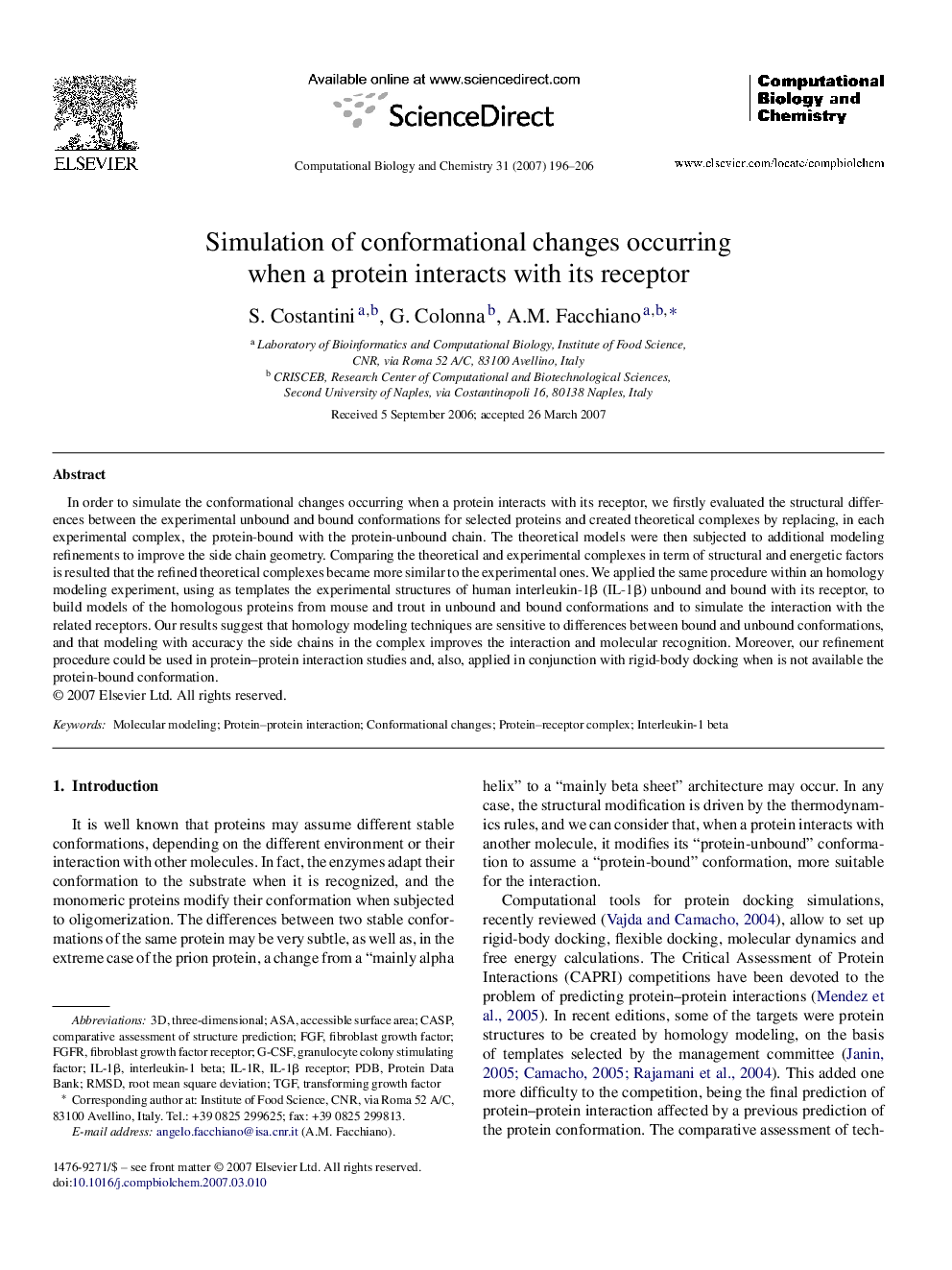| Article ID | Journal | Published Year | Pages | File Type |
|---|---|---|---|---|
| 15454 | Computational Biology and Chemistry | 2007 | 11 Pages |
In order to simulate the conformational changes occurring when a protein interacts with its receptor, we firstly evaluated the structural differences between the experimental unbound and bound conformations for selected proteins and created theoretical complexes by replacing, in each experimental complex, the protein-bound with the protein-unbound chain. The theoretical models were then subjected to additional modeling refinements to improve the side chain geometry. Comparing the theoretical and experimental complexes in term of structural and energetic factors is resulted that the refined theoretical complexes became more similar to the experimental ones. We applied the same procedure within an homology modeling experiment, using as templates the experimental structures of human interleukin-1β (IL-1β) unbound and bound with its receptor, to build models of the homologous proteins from mouse and trout in unbound and bound conformations and to simulate the interaction with the related receptors. Our results suggest that homology modeling techniques are sensitive to differences between bound and unbound conformations, and that modeling with accuracy the side chains in the complex improves the interaction and molecular recognition. Moreover, our refinement procedure could be used in protein–protein interaction studies and, also, applied in conjunction with rigid-body docking when is not available the protein-bound conformation.
